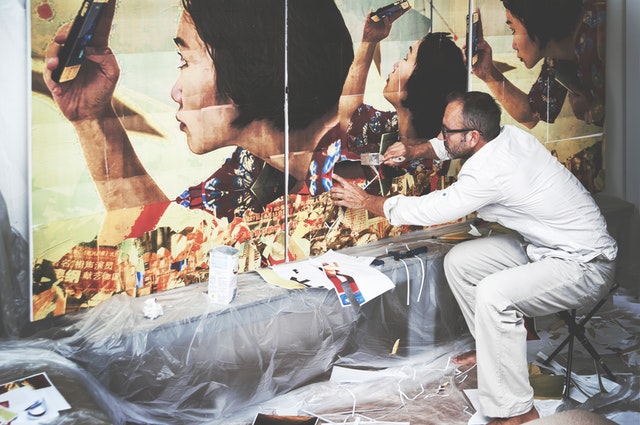You follow all the art guilds and associations, spend days obsessing over your favourite artists’ techniques, visions and ideas. Yet you’re still not quite sure where you’ll fit into the art industry yourself? There are many different career paths that you can get into when it comes to the art industry. Check out the careers below to help you decide:
1 – Art professor
An art professor has advanced expertise based in art and is most often university or college-based. They will plan and develop along with teacher’s lesson plans, course curriculums and the assignments. An art professor will improve the knowledge of their students and help them gain more skills through the instructions and assessments of progress along with serving on various academic committees and advise students the best way to meet their goals. Art professors that are working within secondary schools are there to offer critical reviews, perform research and analyse artwork and documents and publish their findings in scholarly articles. Art professors will need to complete a masters education degree in visual arts or art history combined with work experience. Universities often prefer candidates to have a doctoral degree program in order to gain consideration for employment.

2 – Commercial artist
A commercial artist will develop and create images and graphics that are used all with different advertising campaigns, packaging material and online or print magazines. And perhaps one day end up with their artwork mounted on museum display.
A commercial artist will interpret the basic ideas that are based upon the client or the employer descriptions to produce several drafts to meet client needs using computerized designs and freehand sketches.
A commercial artist will work closely with supervisors, clients and other staff in order to brainstorm ideas, increase the understanding surrounding target markets and refine designs, along with budgeting problems and scheduling goals. They can work independently such as freelancing or they may work in advertising corporations, graphic design firms and publishing companies.
A commercial artist is required to complete a bachelor’s degree in the field of commercial art in order to qualify for level entry work.
3 – Animator
Animators are responsible for the creation, development and the production of moving images that are used for film, video games, television projects and websites. Animators utilize computer software, hand drawings and computer graphics to create 2-D and 3-D animation for models, storyboards and characters. The animators can design advertisements that are to be used on the internet in order to attract and direct online visitors to different websites. In order to qualify for the entry-level position, you need to have a bachelor level in computer graphics or art that are combined with strong technical skills and work experience.
4 – Graphic designer
Graphic designers create graphics and visual images for private or public organisations. They are able to analyse what the client needs, produce illustrations, design visual images, texts animations and create promotional materials like logo, advertisements, display signage and marketing brochures.
Graphic designers use computer software along with hand-sketched drawings for print magazines, newspapers, online, journals and other types of publications. Graphic designers work with marketing representatives, public relations specialists, and promotional professionals. You will need a bachelor’s degree program that is based on graphic designers’ disciplines or the fine arts.
5 – Art Gallery Dealer
An art gallery dealer will work alongside the industry experts who sell and buy all types of artwork. They will work closely with critics, artists, curators, critics and museums that are within independent self-operated businesses representing clients and matching different works with their buyers. Art gallery dealers have contacts between the art professionals and create the sales proposal and set the standard for different memberships within the art gallery associations. Art dealers need to remain current with the industry trends, advances and changes that can contribute to the different market influencers. Not just relying on their keen eye for talent, they must also be able to envision a cohesive union of art pieces in a gallery exhibition, connect with the best gallery exhibition display services to pull it all together. Art dealers will travel internationally to attend exhibitions, auctions and studios in order to purchase works for collectors and galleries. You will need to complete an advanced graduate-level degree in art history and have some work experience in the art critics field and connections with art academics in order to gain employment.

